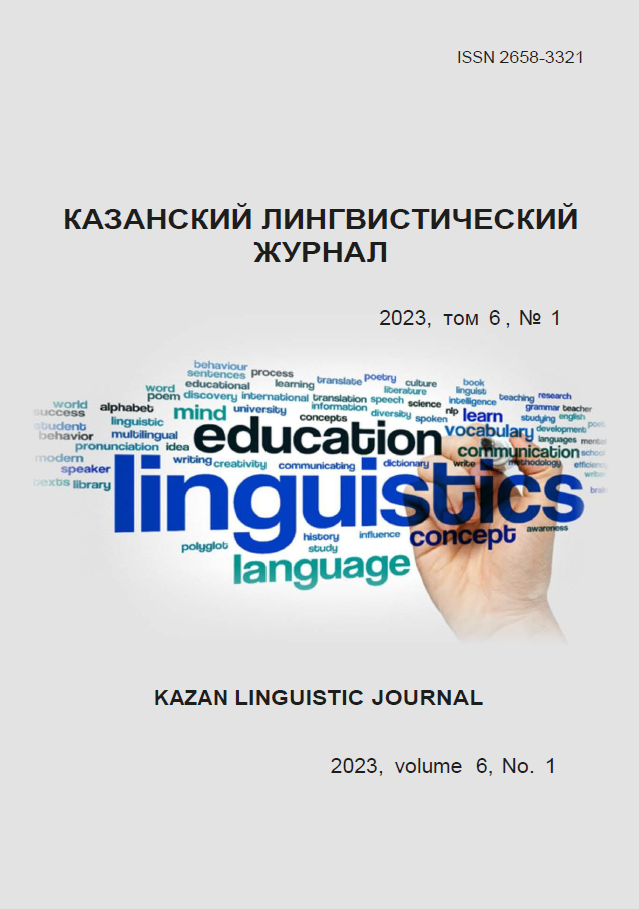Interpretation of the novel “love” by Elif Shafak through the prism of “a new aesthetic” of metamodern
https://doi.org/10.26907/2658-3321.2023.6.1.47-57
Keywords:
metamodern, new aesthetic, hypertextuality, Elif Shafak, Jalal al-Din RumiAbstract
In the article, a new structure of feeling, called by its creators metamodernism, is applied to the analysis of novel “Love” by Elif Shafak. An important stage of our research was the consideration of Melvina’s ideas through their reflection in modern literature. Since the majority of modern researchers explore Safak’s work within the framework of postmodernism, the scientific interpretation of the novel is limited by the conceptual apparatus of postmodernism. Therefore, the adaptation of the medieval poet’s ideas is defined as the “exploitation” of the heritage of Eastern culture in order to popularize the novel. The “new aesthetics” of the metamodern, in our opinion, can form a new understanding of the novel in the light of its perception in society. The information field created around the text of the novel after its release indicates a highly positive perception by the public not only as a world bestseller, but also as a text referring to Eastern mysticism, Sufi heritage and instructive history. This study is aimed at re-evaluating the Sufi positions in the novel from a new perspective, and identifying the possible positive effects of such a narrative on society. The article proves that Elif Shafak uses selected Sufi positions and “metamodernization”, legendarization, of existing historical figures to create a “new myth” in the metamodern plane. In addition, we conducted an analysis of hypertextual space of the novel.
References
References
El-Zein A. Spiritual Consumption in the United States: The Rumi phenomenon. Islam and Christian-Muslim Relations. 2000; (1): 72–85. (In Eng.)
Furlanetto E. The ‘Rumi Phenomenon’ Between Orientalism and Cosmopolitanism the Case of Elif Shafak’s the Forty Rules of Love. European Journal of English Studies. 2013; (2): 201–213. (In Eng.)
Özdoğan M.A. Çağdaş Türk Romanında Mevlana’nın Postmodern Bi̇r Tüketi̇m Unsuru Olarak Kullanılması. Yüksek Lisans Tezi. Antalya; 2017. (In Turk.).
Repenkova M.M. Novels of Elif Shafak as an example of structural narration. Herald of Moscow university. Available from: https://cyberleninka.ru/article/n/romany-elif-shafak-kak-primer-strukturirovannogo-povestvovaniya [accessed 03.07.2022]. (In Russ).
Vermeulen T., van den Akker R. Notes on metamodernism. Journal of Aesthetics and Cul-ture. 2010; (1). Available from: https://metamodernizm.ru/notes-on-metamodernism/ [accessed 04.07.2022].
Freinacht H. You’re not metamodern before you understand this. Part 2: Proto-Synthesis. Available from: https://metamodernizm.ru/you-are-not-metamodern-part-2/ [accessed 03.07.2022]. (In Eng.)
Khruscheva N. Metamodern in the music and around it. М.: RIPOL Classic; 2020. (In Russ).
Genette G. Figures. In 2 volumes. M.: Izd.-vo im. Sabashnikovyh;1998. (In Russ).
Panfilova S.S. Representation of Fictional Work at English-speaking Interview-Dialogue: Hupertextual Method. Literary Studies. Theory and Practice Issues. 2012; (6): 112–116. (In Russ).
Vdovina A.O. Religious and Philosophical Tropes of the novel Love by Elif Shafak. Gradua-tion Thesis. Kazan; 2021. (In Russ).
Interview with Elif Shafak. Posted by Goodreads on February 8, 2010. Available from: https://www.goodreads.com/interviews/show/469.Elif_Shafak [accessed 04.07.2022]
Into connection. Elif Shafak. Available from: https://highprofiles.info/interview/elif-shafak/[accessed 04.07.2022]
Books of Fate: “The Forty Rules of Love” by Elif Shafak [comment in the virtual communi-ty Live Journal]. Available from: https://nastavnica.by/knigi-sud-by-40-pravil-lyubvi-e-lif-shafak/[accessed 04.07.2022]. (In Russ).
“The Forty Rules of Love” by Elif Shafak [comment in the virtual community Live Journal]. Available from: https://viktoriya-angel.livejournal.com/56364.html [accessed 04.07.2022]. (In Russ).
Volosnikov R.A. Influence of Social Media on Formation and Fuctioning of Public Opinion. Sociological Almanac. 2019; (10): 82–90. (In Russ).
Rukina N.A. Information Influence on Public Opinion: theoretical approach. Herald of Mos-cow State University. Issue 18. Sociology and politology. 2015; (1): 245–256. (In Russ).
Molodtsov E. From irony to sincerity or from postmodernism to metamodernism. Available from: https://emolodtsov.com/metamodern [accessed 03.07.2022]. (In Russ).
Javelidze E.D. At the origins of turkish literature. Jelal al-Din Rumi (outlook issues). Tbilisi: Metsniereba; 1979. (In Russ).
Ceriello L. Toward a Metamodern Reading of Spiritual but Not Religious Mysticisms. Being Spiritual but Not Religious: Past, Present, Future(s). ch. ed. William B. Parsons. Routledge Press; 2018. (In Eng.)
Şafak E. Aşk [Love] / çev. Kadir Yiğit Us. İstanbul: Doğan Kitap, 2009. 432 s. (In Turk.).






